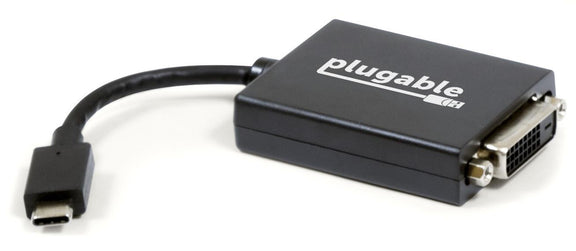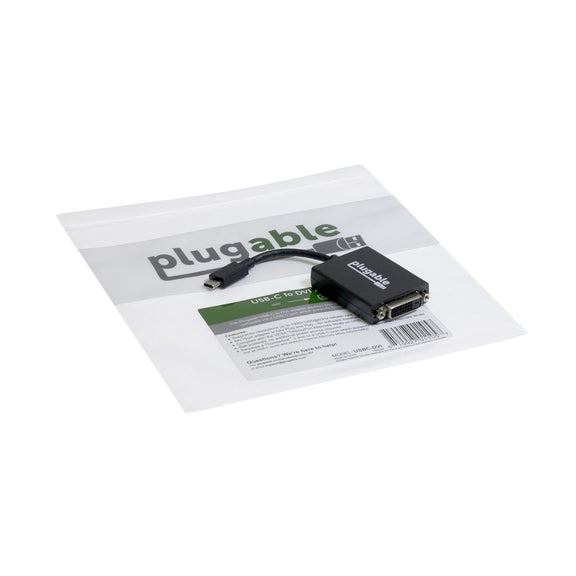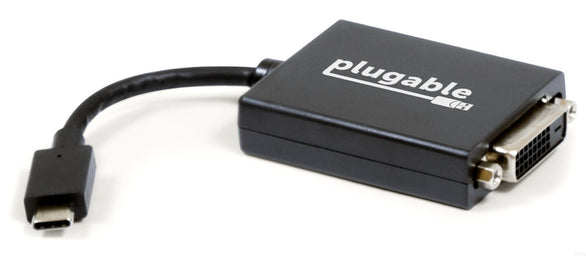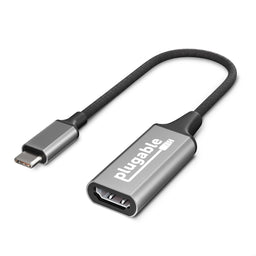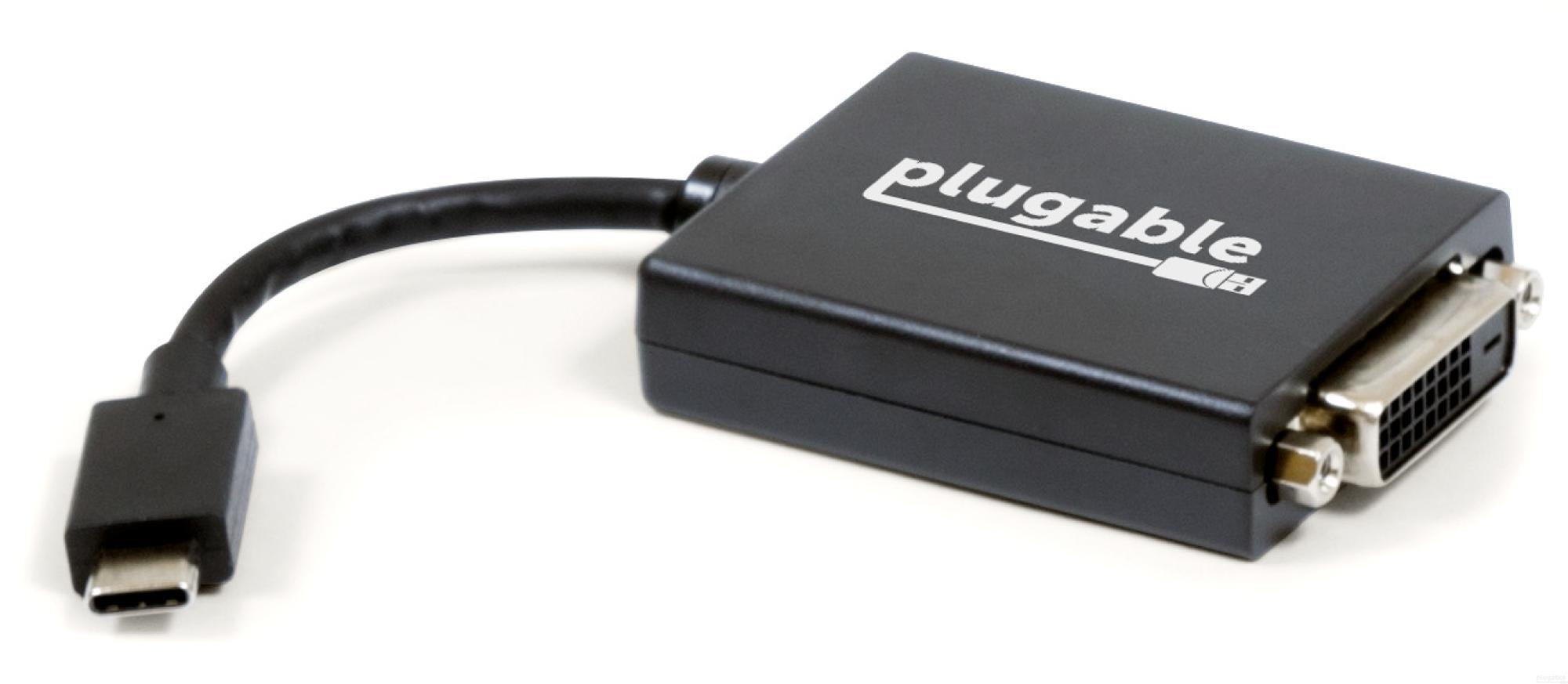

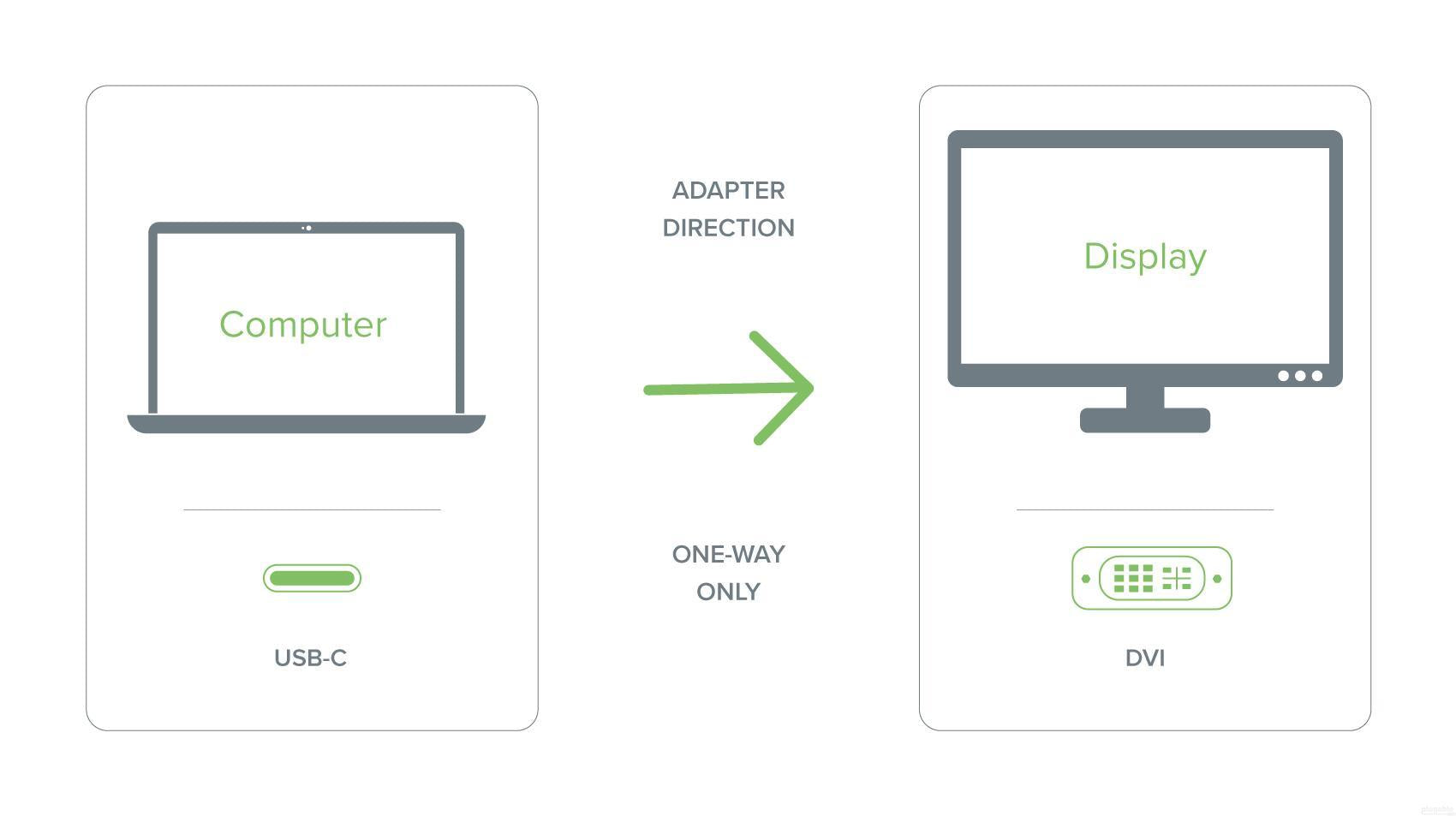
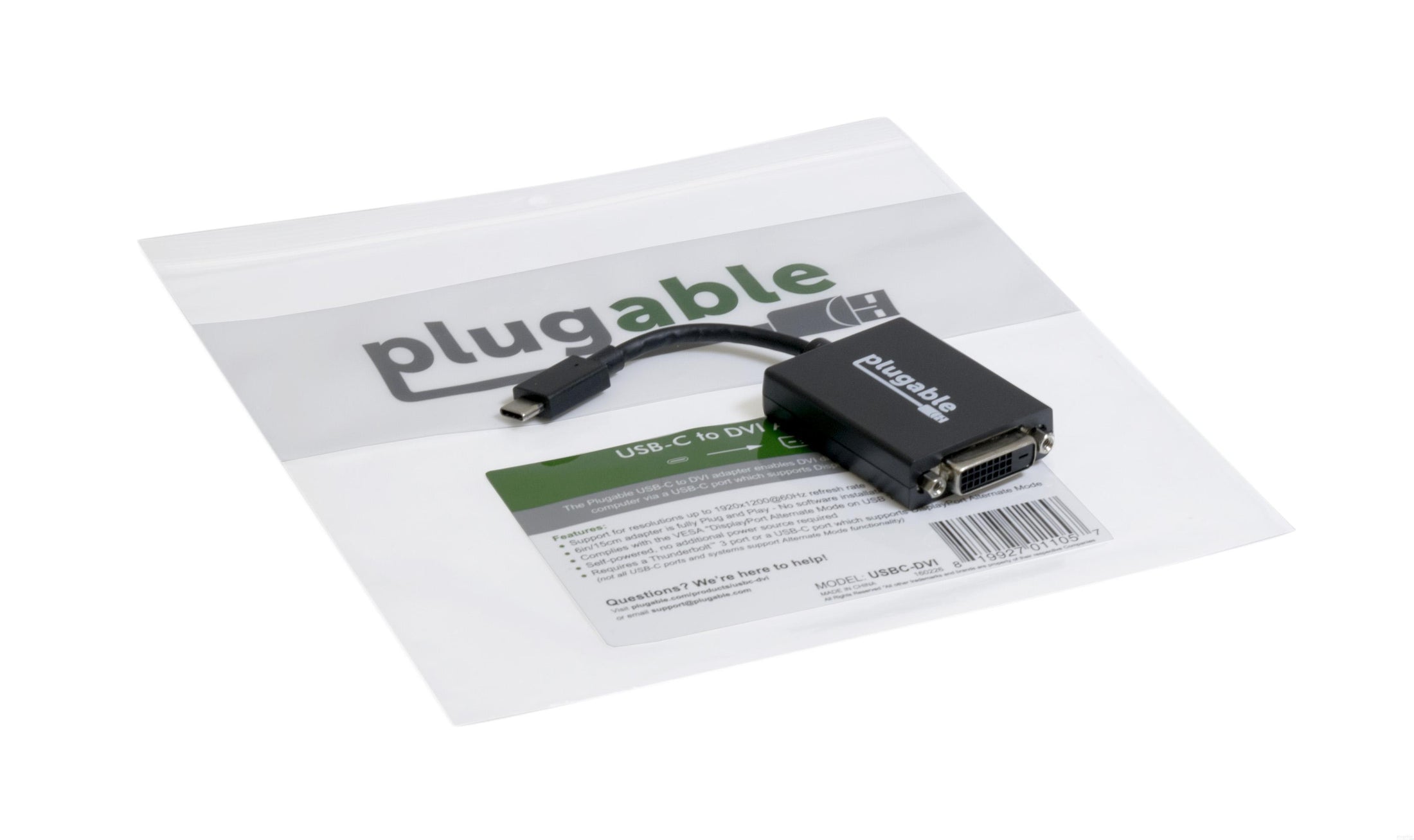
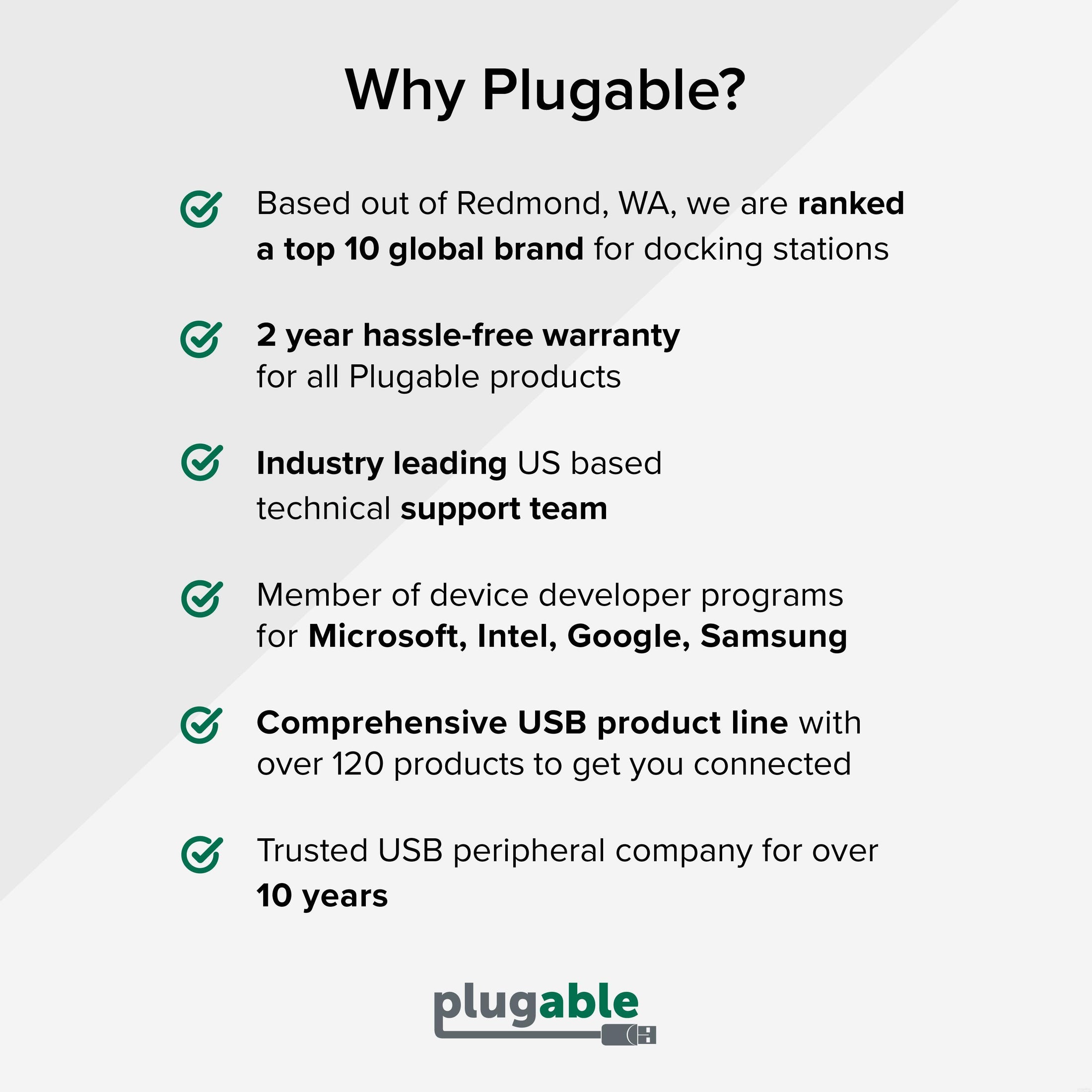





Hassle free, 2-Year Warranty
Fast, Free Shipping on Orders $35+
Lifetime Technical Support
30-Day Money Back Guarantee
Plugable USB-C to DVI Adapter
$14.95 USD
SKU: USBC-DVIAmazon Rating : (127 Reviews)
Features
- USB-C to DVI— Utilizes the native video capabilities of USB-C ports on supported computers to drive a DVI monitor with resolutions up to 1920x1200 @ 60Hz
- Ideal for IT teams modernizing laptops while extending the life of existing DVI monitors— The Plugable USB-C to DVI Adapter enables driverless, plug-and-play connectivity across Windows, macOS, Chrome OS, and Linux, allowing organizations to issue newer USB-C/Thunderbolt laptops without replacing large inventories of 1080p/1200p DVI displays—reducing refresh costs, minimizing help desk tickets, and simplifying standardization for mixed-device environments
- Great For Travel— The compact and lightweight design of this USB-C to VGA adapter allows you to quickly pack it for business trips, commuting, or anytime you need a way to connect to a monitor or projector.
- Compatibility— Works with iPhone 15, modern M-Series MacBooks, Dell XPS, Microsoft Surface, HP Spectre x360 systems with Thunderbolt 4, Thunderbolt 5, and USB4, and DisplayPort Alternate Mode over USB-C ports
- 2-Year Coverage, Lifetime Support— Every Plugable product, including this USB C to DVI adapter, is covered against defects for 2 years and comes with lifetime support. If you ever have questions, contact our North American-based team - even before purchase
Free 3-Day Continental U.S. Shipping on Orders Over $35!



